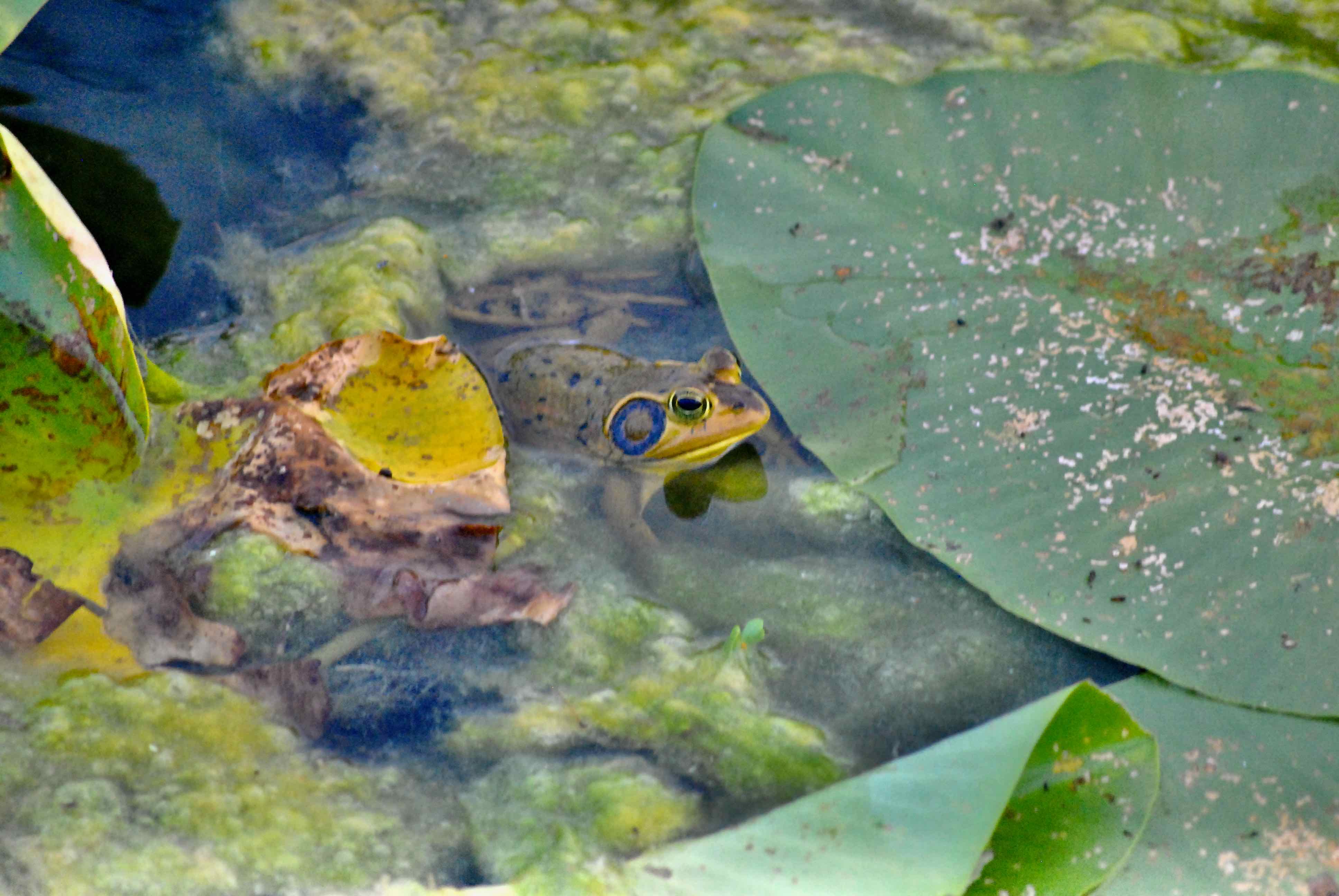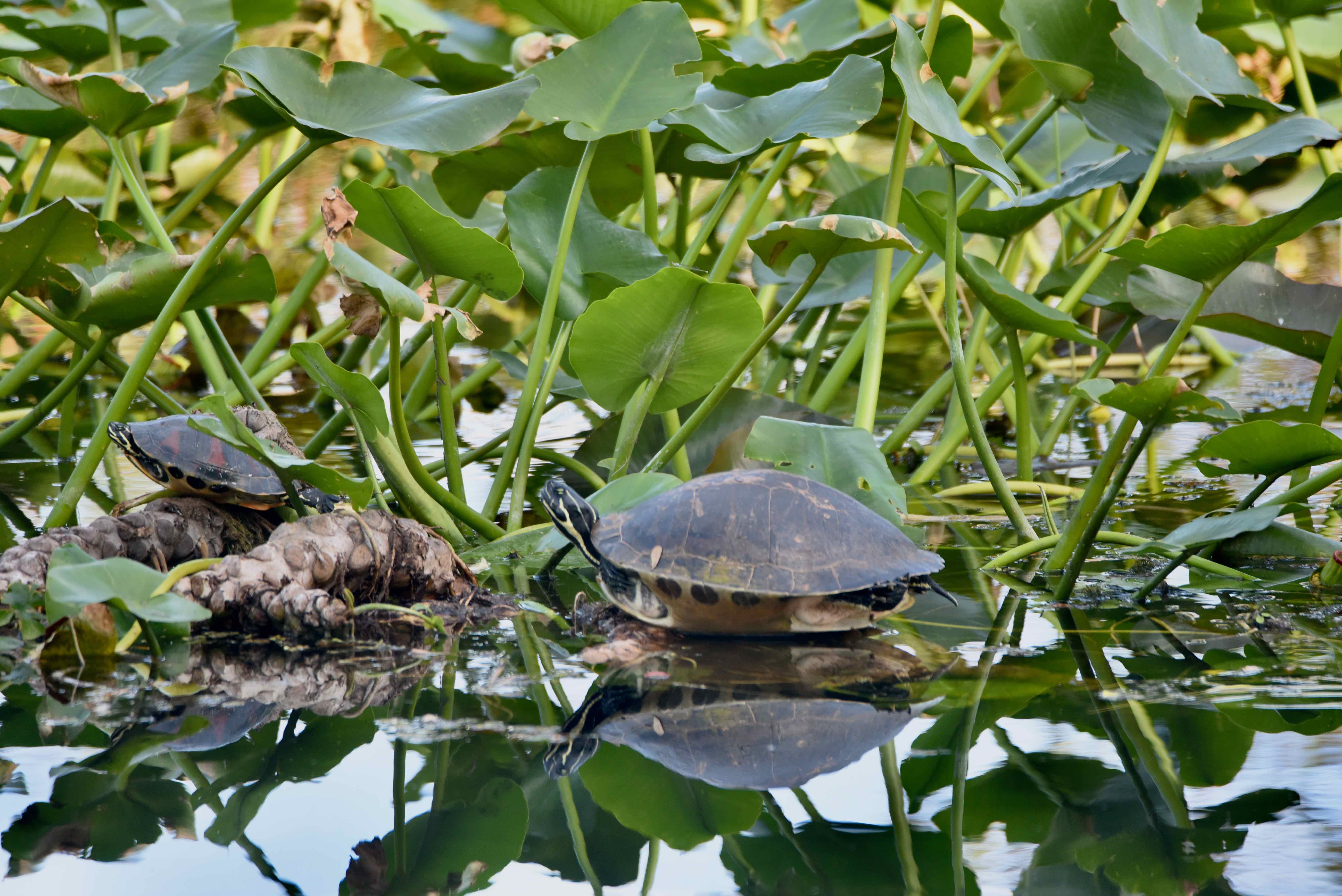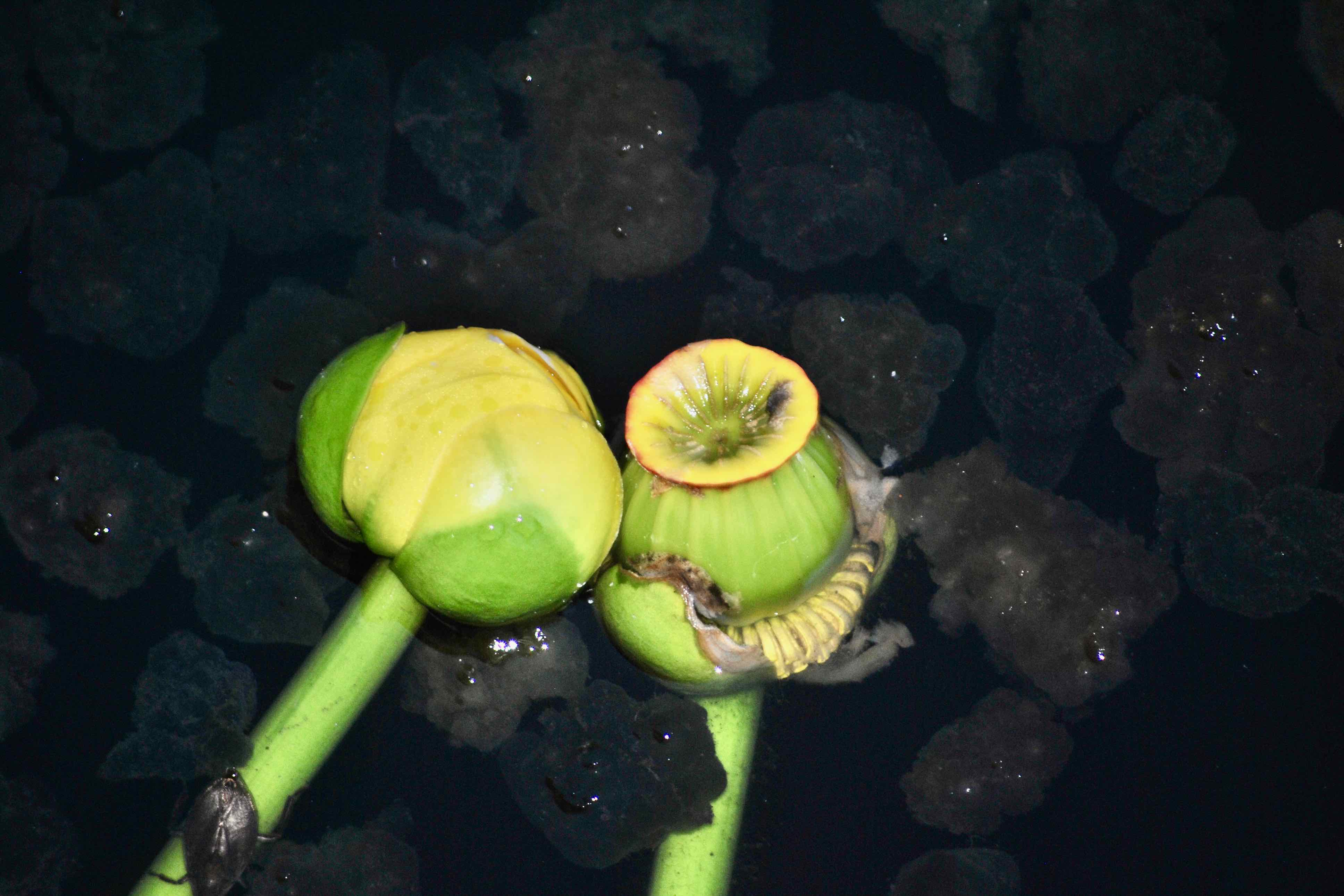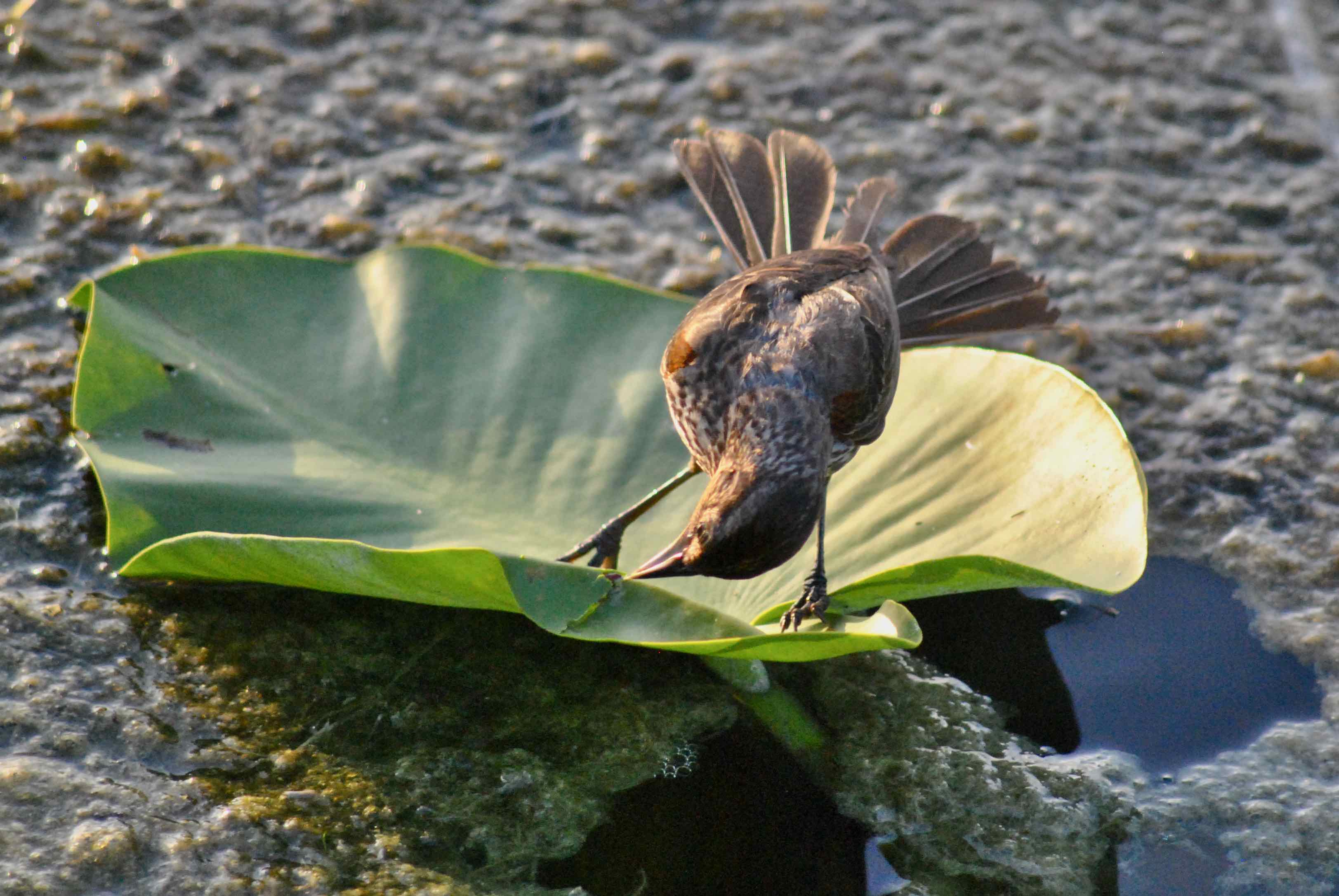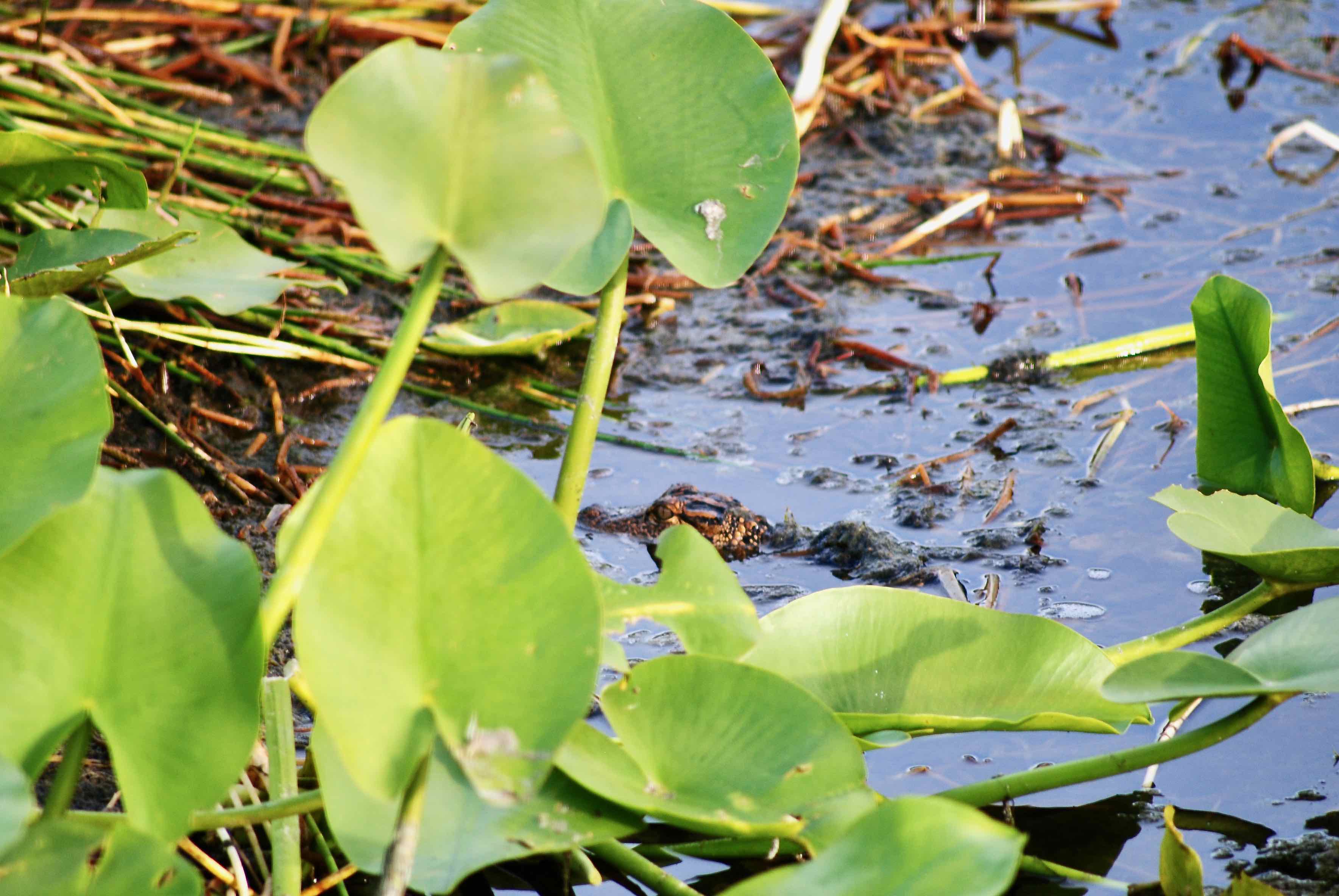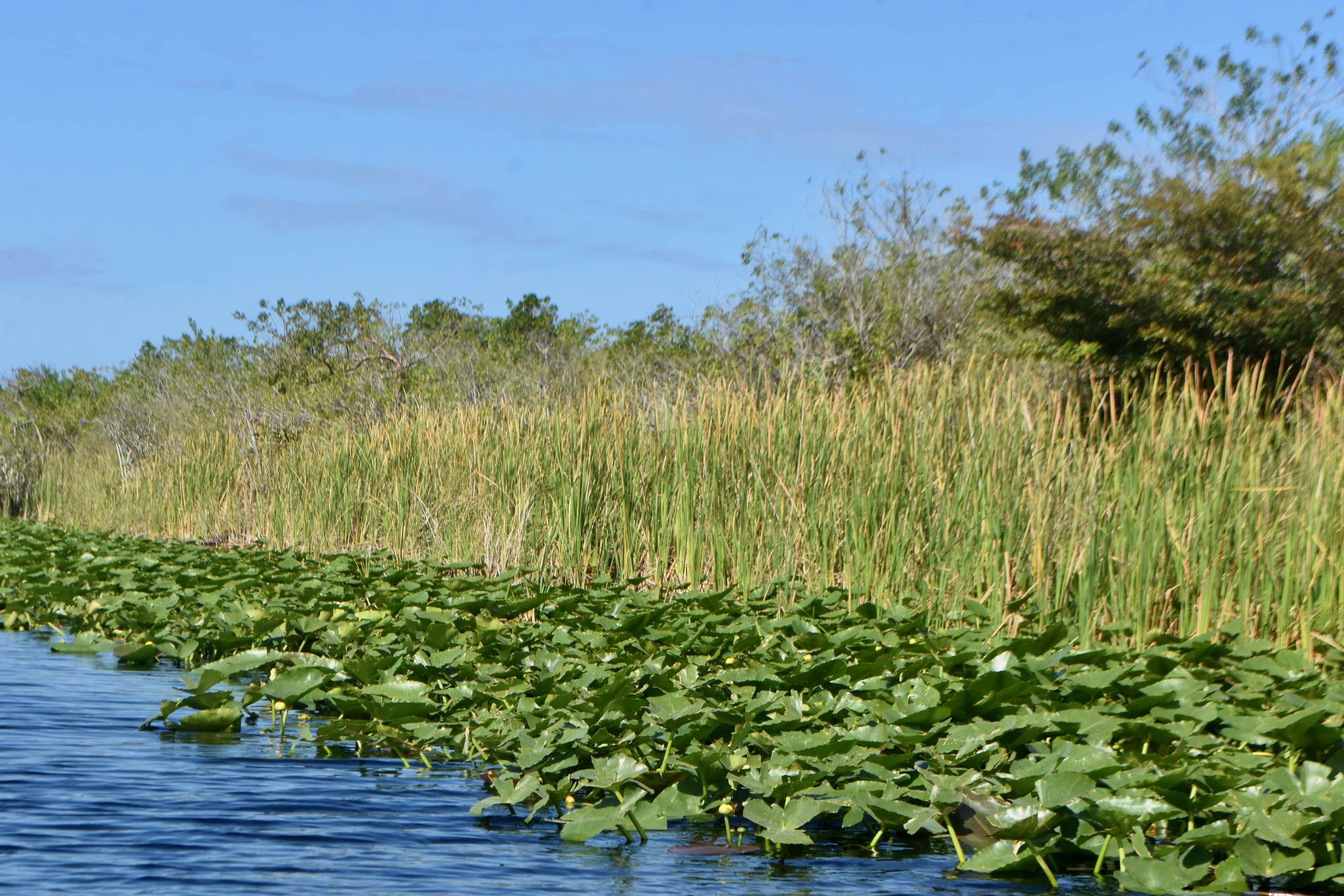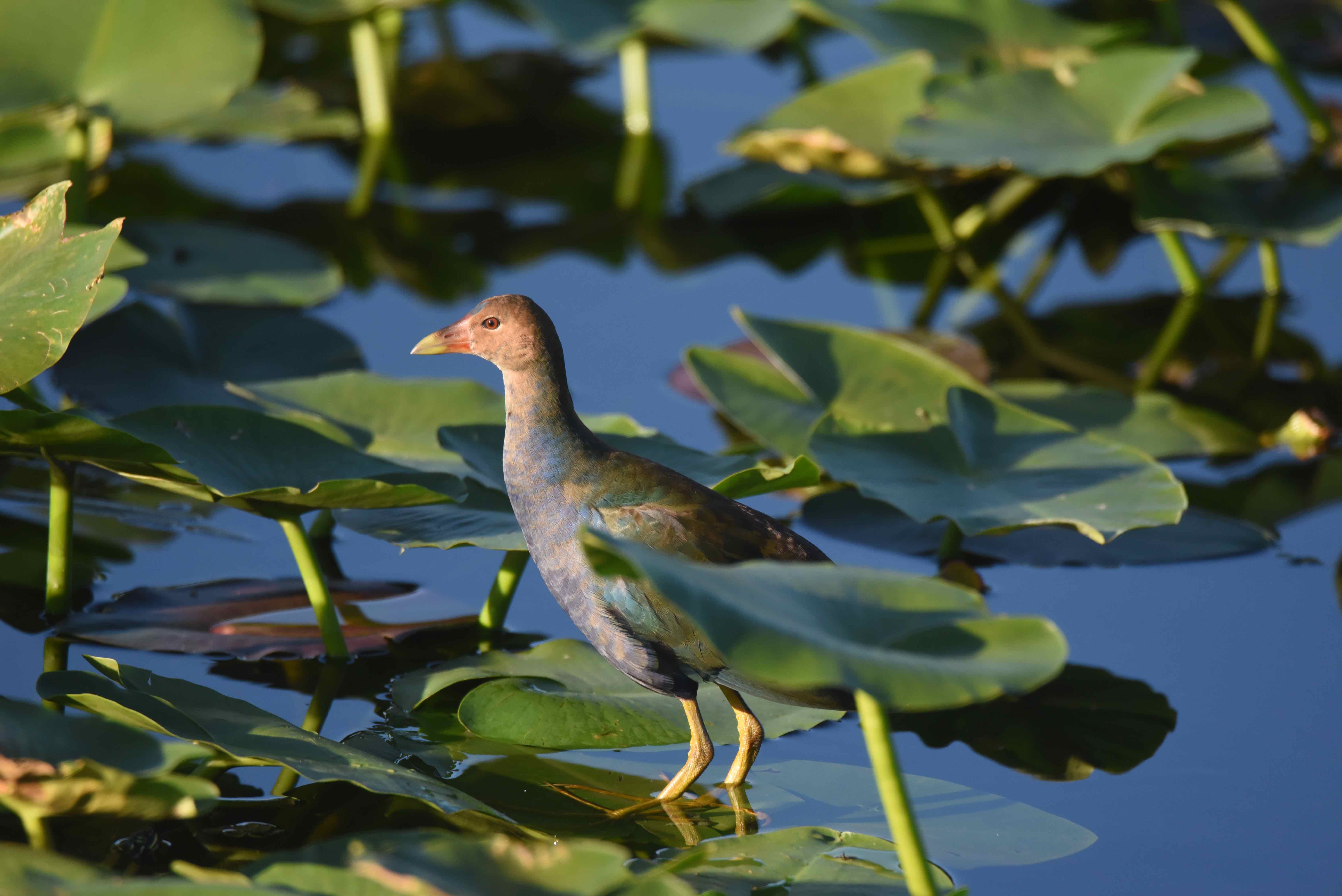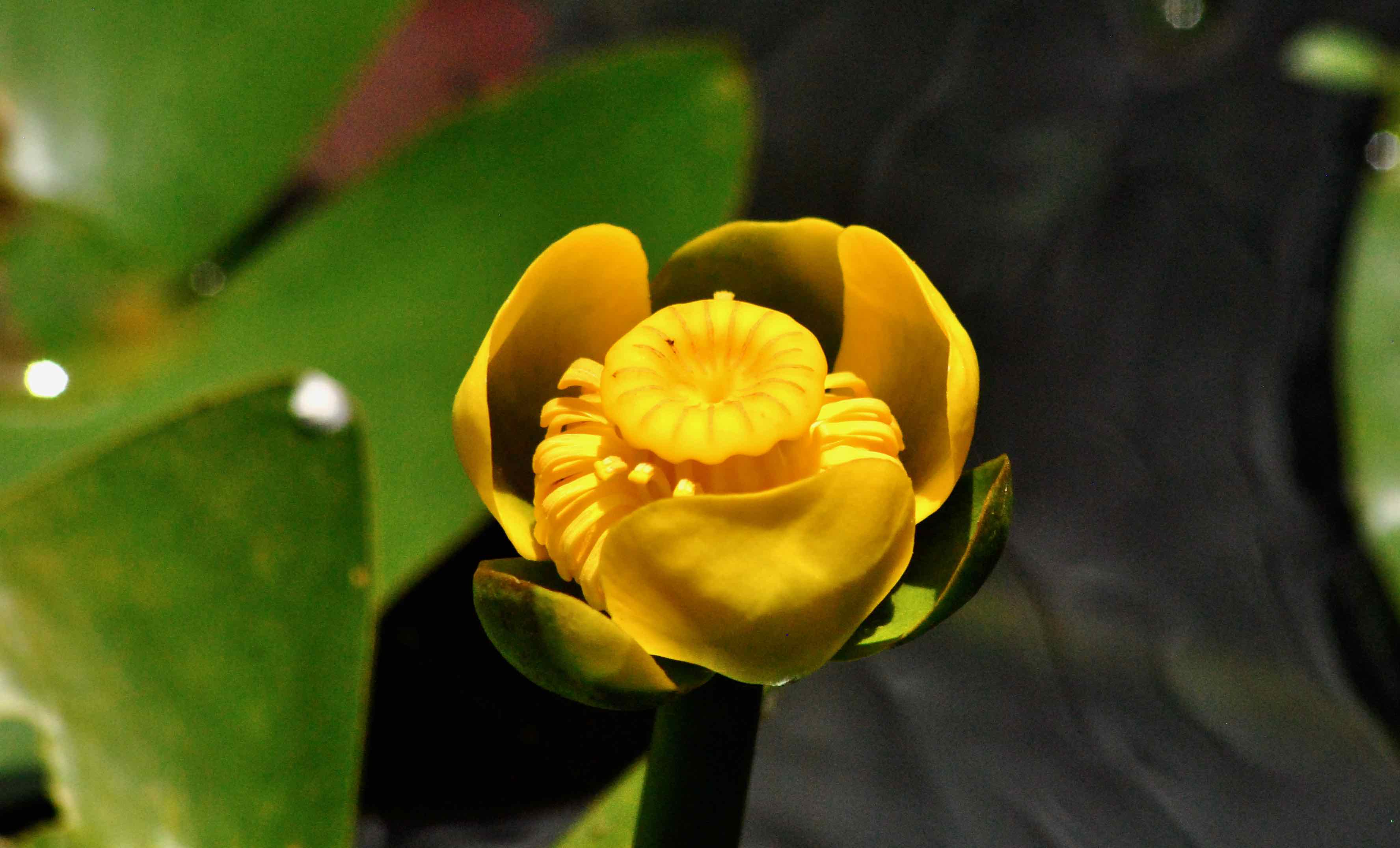
Spatterdock, photographed at J.W. Corbett Wildlife Management Area Noth Entrance, Loxahatchee, Palm Beach County, in July 2015.
The Seminoles allegedly had a saying: the White Man will leave Florida when the spatterdock opens up. Thing is, spatterdock, Nuphar lutea, never really opens up, at least not in the way other flowers do. And of course, there's no sign that the White Man is about to vacate the state.
In any regard, spatterdock is among the most common aquatic plants in Florida. It's found in most of the 67 counties, with the notable South Florida exceptions of Collier and Monroe. It has sort of a tropical look to it, but it's actually found over most of the eastern and central United States and even into Canada. It's rare enough in Connecticut and Maine that those states — which call it yellow pond lily — consider it "of concern."
In fact, many unfamiliar with spatterdock will call it a waterlily, but even though it's in the same botanical family with waterlilies, it’s not. Waterlilies have flowers that fully open, while spatterdock produces yellow flowers that look perpetually half-open, at best. They are open, but they just don't look it. It has large heart-shaped leaves and a huge root system that moors the plants to the bottom. The flowers can have stems as long as six feet; they attract pollinating insects, while ducks and other water birds will eat the seeds. As seen in the photos below, this aquatic plant provides cover for a host of animals, including fish, frogs and young alligators.
It's a host plant for two types of moths — the yellow waterlily borer, shown below, and the waterlily moth. It's hard to say for sure but we believe the female red-winged blackbird shown below is dining on a yellow waterlily borer.
Spatterdock is edible, in the strictest sense of the word. It won't kill you or make you sick, but doesn't taste very good, either. One source says the root, after being soaked and boiled to remove bitterness, tastes like sheep's liver. Yum. There are reports that various Native American tribes regularly used it as food, but as our favorite Florida forager says, these reports raise questions about whether the spatterdock they were eating is the same spatterdock we see. The seeds, reportedly, are tasty, however.
The U.S. Department of Agriculture's PLANTS database lists 17 synomyms — scientific names someone has given a plant other then the accepted one — for spatterdock. That's an indication of how much the plant can vary in its looks. Synomyms usually occur because a naturalist believes he or she is looking at a different species than what's previously has been described. The University of Florida's Center for Aquatic and Invasive plants lists spatterdock as Nuphar advena, having previously listing it as N. luteum. Meanwhile, the Institute for Regional Conservation and the USDA call it N. lutea, subspecies advena. It's all allegedly the same plant.
Native Americans also used spatterdock to stop bleeding and as an analgesic, or pain reliever. Some Canadian tribes used spatterdock as an aphrodisiac, or conversely, to blunt sexual drive, and as treatment for infertility. A tea made from the root has been used to treat dysentery and diarrhea. Spatterdock is widely used in landscaping — in wet gardens and along the edges of ponds and lakes. It is a perennial and flowers in spring and summer.
Spatterdock is a member of Nymphaeaceae, the waterlily family. Another common name: cow lily.
Photo Gallery — Click on photo for larger image
Links for Spatterdock


